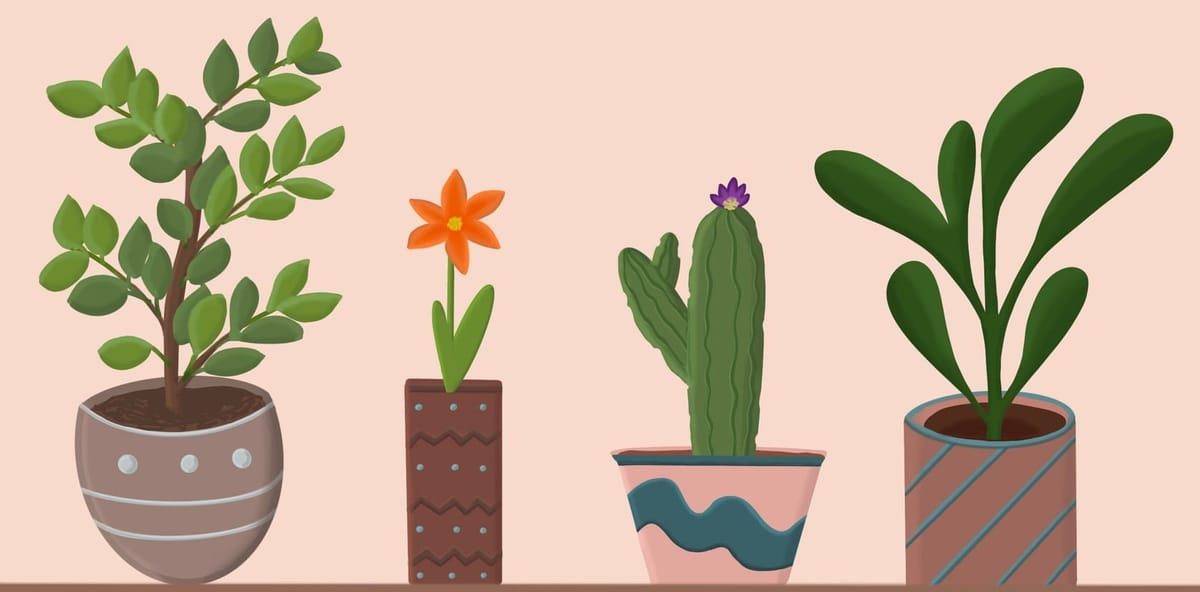
Systemic insecticides are a type of pesticide that, when applied to a plant, are absorbed and distributed throughout its tissues (roots, stems, leaves, and even flowers). Generally, it works something like this. You add some granules of insecticide to the soil surface of your potted plant with a disposable plastic spoon. When you water the plant, the insecticide dissolves into the water and flows with it down through the soil and into the plant root system. It is then absorbed into the plant with the water and taken throughout the entire plant, stem, roots, flowers and leaves. It is harmless to the plant. But when an insect feeds on the plant matter or sap, it is poisoned by the insecticide.
Unlike contact insecticides, which kill insects by direct exposure (i.e., being directly sprayed with pesticide and then killed), systemic insecticides work by making the plant itself toxic to pests.
One thing I should note is that systemic insecticides, for our purposes anyhow, are used on plants that are grown indoors. That might include a greenhouse or your own indoor plant collection. In an enclosed setting like this, you're trying to get rid of any insects that come into contact with your plants. The reason systemic insecticides aren't used outdoors, is that nature includes a range of insects from predatory to beneficial. We want to leave insects like honeybees alone so they can do their job of pollinating flowers. If a honeybee is grabbing pollen or nectar from a plant that has been exposed to systemic insecticides, it will suffer the same consequences as the indoor predatory insects. For me anyhow, there really are no beneficial indoor insects. (Unless they accidentally flew in as I was walking out the door.)
Systemic insecticides are particularly effective against sucking pests like aphids, whiteflies, and scale insects. One key benefit is their longer-lasting protection, as the insecticide remains within the plant even after external sprays or treatments wear off.
There are several drawbacks to using spray-on insecticides, which is why many people turn to systemic alternatives. Insects often hide under leaves or in hard-to-reach crevices, making it difficult to thoroughly cover the plant with a spray. For instance, turning your plant upside down to reach pests is not only inconvenient, but you may also need to spray each leaf individually—a tedious task, especially if you have many indoor plants. Additionally, sprays often require multiple applications and may still fail to deliver effective results. Neem oil, while popular, frequently draws complaints online about its limited effectiveness. Although stronger, more industrial-grade pesticides are available, completely covering every nook and cranny on the undersides of plants can require considerable effort.
There are downsides to using systemic insecticides. Treated plants should never be placed outdoors where they might come into contact with beneficial insects. Many plant enthusiasts, enjoy moving indoor plants outside for fresh air or sunlight. However, once a systemic insecticide is absorbed into the plant, it permeates every cell, making the plant unsafe for outdoor exposure. Additionally, treated plants must be kept away from anything that could ingest them, such as children, pets, or other animals. It's important to be cautious, especially on a sunny day when you might be tempted to take your pelargoniums outside for indirect sunlight—honeybees may still be drawn to pollinate the flowers, with potentially harmful results.
It may seem obvious, but avoid using systemic insecticides with edible houseplants. This might include something like your potted orange (citrus) plant or kitchen herbs.
If you have a large collection of plants, or consider yourself a plant enthusiast or even a plant hoarder, controlling pests can feel nearly impossible at times. A single new plant carrying the wrong pest can quickly lead to an infestation throughout your entire collection. One advantage of systemic pesticides is their preventative nature—you can add them to the soil of all your plants, including any new additions. This helps ensure that incoming pests are unlikely to establish themselves or reproduce.
